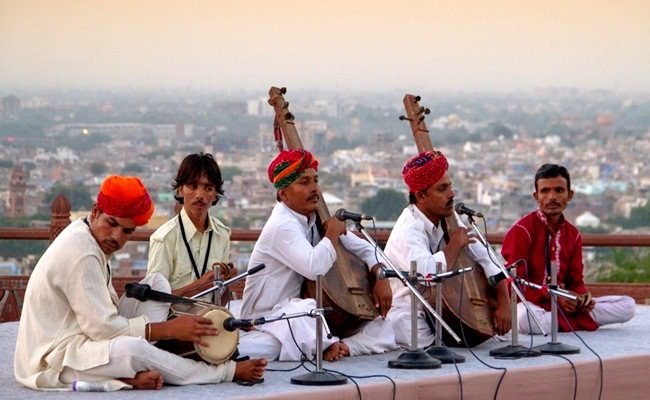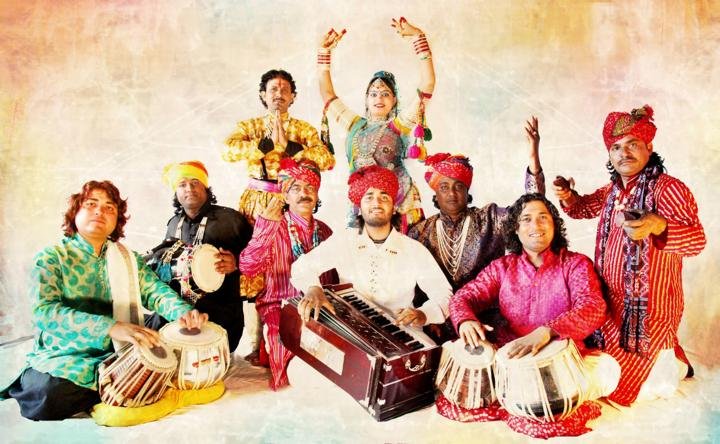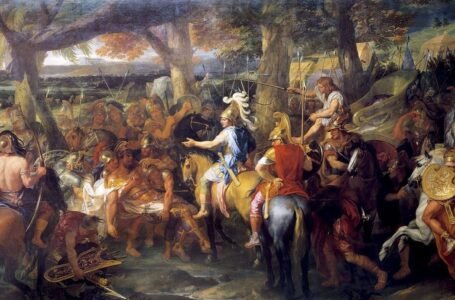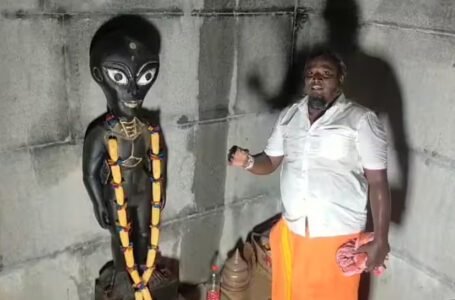The Royal Court Music of Rajasthan: A Musical legacy of Classical and Folk music

This is a tradition which goes like “Bhairon ri thali, sukhad duari, manmohan baje baje thali”
This catchy tune of one of the most popular Rajasthani folk songs, embodying the spirit of this state – the colourful combination of the passionate folk power with the fragile classical affectation. Rajasthan, which is popularly called the land of kings, warriors and glorious colourful history, has for long been the birthplace of arts that characterise the place both the royal magnificence and the unadorned simple beauty. Of them, the one that emerged as the symbol of Rajasthan’s cultural legacy is the royal court music of that state; a remarkable blend of both classical and folk aesthetic.

But this once beloved art form is almost never presented in a strict traditional manner anymore. Due to the information provided, one can locate the causes of decline in social, political and cultural changes, yet it played significant role. In this article, attempt will be made to discuss how and when Rajasthan’s royal court music started and necessary information regarding its development, and how it has become a spectacle of interest in today’s musical world.
Informally known as ‘Social Music of Rajasthan,’ what is Royal Court Music of Rajasthan?
In the most basic of terms used in the current thesis, royal court music in Rajasthan signifies the music that has been nourished and protected by the royalty of the Rajput clans. This breed of music harmonizes the more orthodox ragas with indigenous folk tunes and comes out as nobly beautiful and passionately spirited. Regarded as “Rajputana classical music” the style draws from complex trappings of classical Indian music and performs raw folk tunes of Rajasthan.
The groom’s court musicians, who were thought to represent the groom culturally as well as give performances, were highly valued because of their musicianship. They entertained the kings and other members of the royal family on most occasions starting right from royal dinner parties and ceremonial occasions. Music was not only something which enlivened the feasts but also the announcement of the nobility’s high status, valour and divine origin.
The Royal Court: Early Beginnings and its Music
The roots of court music in Rajasthan may be linked directly back to the Rajput kings of the 15th and 16th centuries when their courts became significant repositories of artistic and cultural activity. Some regions among Rajasthani kingdoms were Mewar, Marwar and Jaipur which eventually became important kingdoms with well-structured strategic internal as well as external systems, huge fort housings and stewardship of ethnicity arts and crafts. Thus these achievements led them to naturally want to glorify their culture and warriors through music.
In the royal courts it was common that variety of classical music western as Dhrupad and Khayal, along with folk music of the area. When the different kingdoms in Rajasthan started get in touch with each other the music also started to take on a local flavor in terms of rhythm, melodies and even instruments used in Rajasthan.
Historical rulers belonging to the Rajput kingdom for instance Maharana Kumbha of Mewar (1433–1468) as well as Maharaja Sawai Jai Singh II of Amber, preferred Jaipur (1699–1743) are and known to have supported art. They were indeed helpful in having close contact to musicians and protect them while creating new fresh music from the conventional and local forms of music.
Inventors and Trailblazers
In other words, it is very challenging to identify creators of music typical for royal courts, because such genre developed through centuries and borrowed features from numerous disciplines. Nevertheless, there are musicians and families that can be named significant ones. Royal court music of Rajasthan was build by the Gharanas that are traditions of performing music.
- The Jaipur Gharana: Jaipur gharana is one of the most important gharana, of the Indian classical music started in the 18th century and brings a different tradition of classical music to the royal courts. Its compositions were finer and organized providing the disciplined rigour associated with fusion of classical/ western music and deep rooted local flavour of Rajasthan.
- Pandit Maniramji: As for another great personality in the field of the Rajasthani classical music, one must mention devedent Pandit Maniramji, who served in the Royal Court in Jaipur in the person of Maharaja Jai Singh II. specially eminent for his excellence vocal music and dramatic singing ability, Maniramji influenced the musical tradition of royal courts of Rajasthan and was involved directly in the formation of a distinct style fusing the folk and the classic elements.
- The Kalyan Singhs and the Gharanas of Mewar: The Kalyan Singhs were considered the best court musicians of Mewar and were highly skilled in both, the Art music and folk music of Rajasthan. These developments proved useful in putting down a sound that carved an individualistic niche in the region.
Why is Royal Court Music Rarely Performed Today?
Despite its grandeur and historical significance, Rajasthan’s royal court music is now rarely performed in its original form. Several factors have contributed to this decline:
- Political and Social Changes: With the fall of the princely states and the integration of Rajasthan into modern India post-independence, the royal courts no longer had the same power or patronage for classical musicians. The dissolution of the princely states after 1947 significantly affected the livelihood of court musicians, and the music that once flourished under royal patronage lost its main audience.
- Shift to Popular Music: As the global music scene evolved, popular music styles such as Bollywood, folk fusion, and contemporary genres gained prominence. Traditional court music, being rooted in classical and folk traditions, began to seem outdated and less appealing to younger generations.
- Loss of Traditional Settings: The intimate settings of royal courts where music was traditionally performed have also disappeared. The environment of the grand palaces and royal durbars (courts) created an atmosphere where music could be appreciated in its full splendor. In modern settings, the scale and reverence required to experience such music are often lost.
- Difficulties in Preservation: Unlike other classical traditions, royal court music’s intricacies—especially the blending of classical and folk styles—require specialized training and understanding. The lack of formal institutions dedicated to the preservation of this music has also led to its decline.
Significance and Motive of Royal Court Music
The royal court music of Rajasthan is much more than just entertainment. It is a cultural artifact, a living testament to the grandeur and sophistication of Rajasthan’s royal heritage. The music served multiple purposes:
- Cultural Expression: The blending of classical and folk traditions allowed for a more accessible form of cultural expression. The elite of the court could connect with their own culture through the classical ragas, while the common folk could identify with the melodies and rhythms that reflected their daily lives.
- Religious and Ceremonial Functions: Many performances were conducted in connection with religious rituals, especially during auspicious events like weddings, coronations, or during the annual celebrations at the royal court. The music was considered a form of devotion and a way of invoking divine blessings for the kings and their people.
- Political Significance: The music performed in the royal court often carried a political undertone, with compositions celebrating the valor and victories of the Rajput kings. These performances reinforced the cultural and political legitimacy of the monarchy.
Rajasthan’s Cultural and Mythological Connection to Music
Music in Rajasthan is deeply intertwined with the state’s culture, religion, and mythology. Rajasthan’s folk traditions, such as the songs of the Manganiyars and Langas, are built around mythological stories, historical events, and the everyday lives of the people. These folk traditions were absorbed into the royal court music, adding a rich, mythological layer to the compositions.
One prominent mythological figure often associated with music in Rajasthan is Tansen, the legendary musician at the Mughal court, who is said to have been inspired by the ragas of Rajasthan. It is believed that he could summon rains and fire through his musical compositions—a testament to the deep belief in the power of music in ancient Rajasthani culture.
Moreover, the tradition of Sufi music, which has a significant presence in Rajasthan, has influenced the royal court music. The mystical and devotional songs of Sufism often found their place in the royal courts, where they were believed to bring the kings and courtiers closer to divine wisdom.
How Was Royal Court Music Played?
Royal court music was a multi-layered experience, performed with precision, grace, and respect for tradition. Music was played with a variety of instruments that were symbolic of the cultural richness of Rajasthan:
– Sitar and Tanpura for the classical melody,
– Dholak and Tabla for rhythm,
– Sarangi for its soulful, mournful sound,
– Shehnai for its auspicious and festive tone.
Musicians were not just performers; they were storytellers. The songs told tales of valor, love, mythology, and history, often accompanied by elaborate movements, gestures, and expressions.
These performances were typically held in the evenings, when the court would gather for feasts or ceremonial gatherings. The music was designed to create an atmosphere of majesty, reflecting the nobility’s high status while simultaneously connecting with the spirituality and cultural roots of the people.
Conclusion
The royal court music of Rajasthan, with its intricate blend of classical and folk traditions, once formed the heartbeat of the kingdom’s cultural identity. Though rarely performed today, it remains an essential part of Rajasthan’s legacy—a legacy that celebrates the region’s rich history, its spiritual depth, and its artistic grandeur. In a rapidly changing world, where contemporary music often dominates the stage, the royal court music of Rajasthan serves as a reminder of the value of preserving cultural heritage. As we look to the future, it is crucial that we honor the legacy of Rajasthan’s royal court musicians and their contributions to the world of music. The melodies of Rajasthan may be quiet today, but they are far from forgotten. And perhaps, one day.


